Last Updated on: 4th August 2024, 11:36 pm
When looking at lists of the top Mayan sites in Mexico, the San Gervasio ruins will seldom get mentioned. And perhaps justifiably so, as the site lacks the magnificent pyramids or relief carvings of Chichén Itzá and Uxmal.
But for those with an interest in Mayan history and culture, San Gervasio makes for a rewarding visit, as it was long considered the abode of Ixchel, the Mayan religion’s most important goddess.
San Gervasio can be visited by those basing themselves on the island of Cozumel, those coming as part of a cruise, or as a day trip from nearby Playa del Carmen. Be sure to check the end of the article for more tips on planning a visit.
The Journey to the Ruins
The San Gervasio ruins are located on the island of Cozumel, Mexico’s largest and itself a popular place to stay for people visiting the Riviera Maya.
But the island is also an easy day trip from the popular tourist hotspot of Playa del Carmen, with ferries departing hourly (learn more about the ferries below).
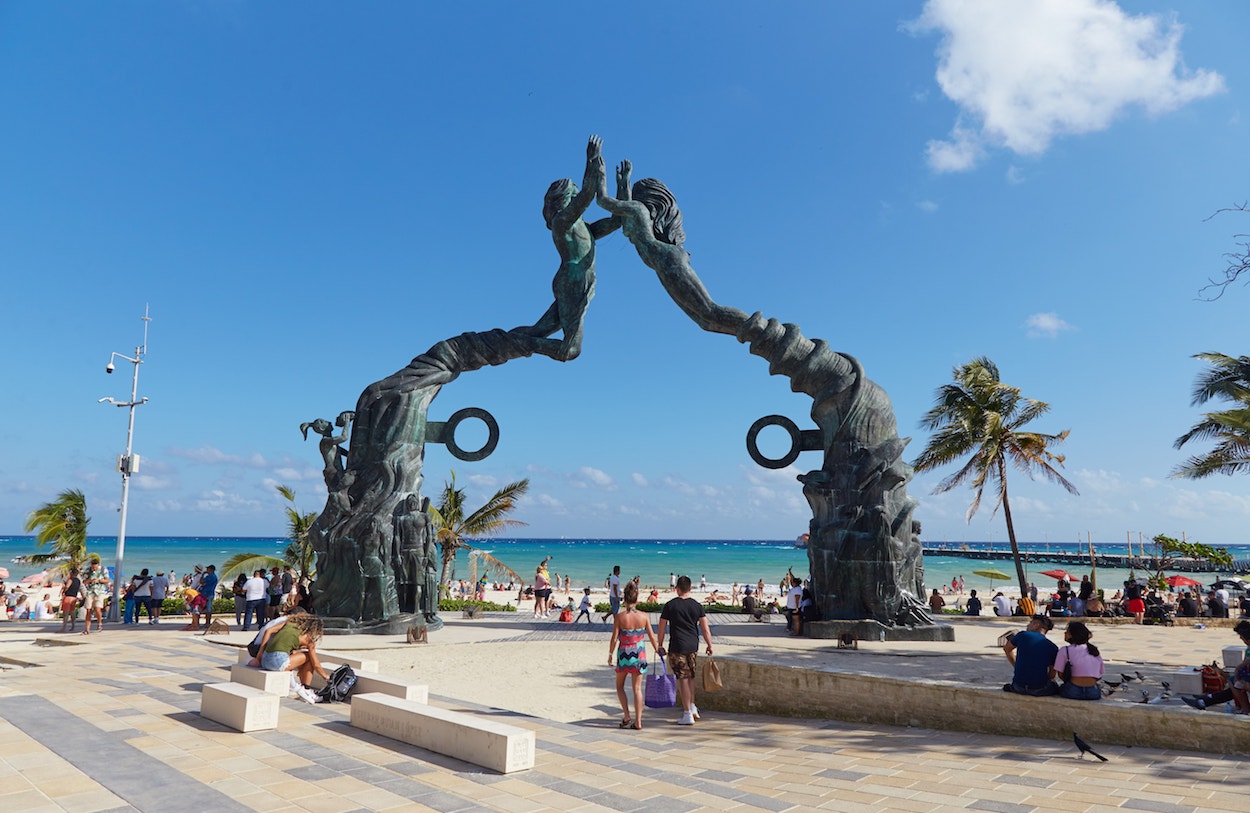
At just around 30 minutes, the ride to Cozumel is a smooth and easy one. Getting to the San Gervasio ruins from the port, however, is another story.
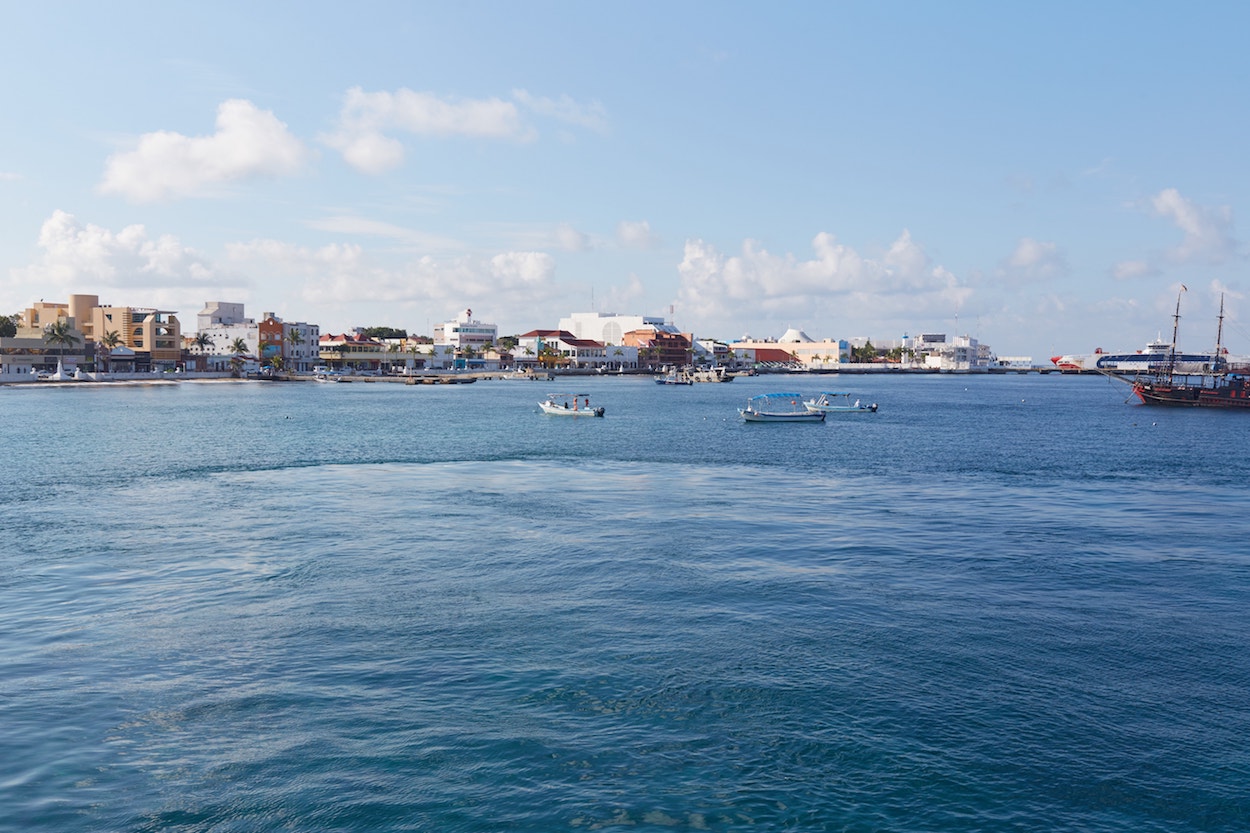
The ruins are about 15 kilometers away, and to get there you have a couple of options. A roundtrip taxi ride could cost as much as $50 USD (if not more), while another option is to take a tour.
Instead, I opted to rent a bicycle for only $250 MXN, or about $12 USD. I went with Best Bikes Cozumel, who I’d recommend for all those considering the journey. Keep in mind that you’ll need to leave a passport or some form of ID with them until you return the bike, which is pretty standard.
Cozumel’s terrain is entirely flat, while you just have to make one turn to reach the archaeological site. Furthermore, you’ll have ample riding space on the main road, making this a straightforward and safe trip.
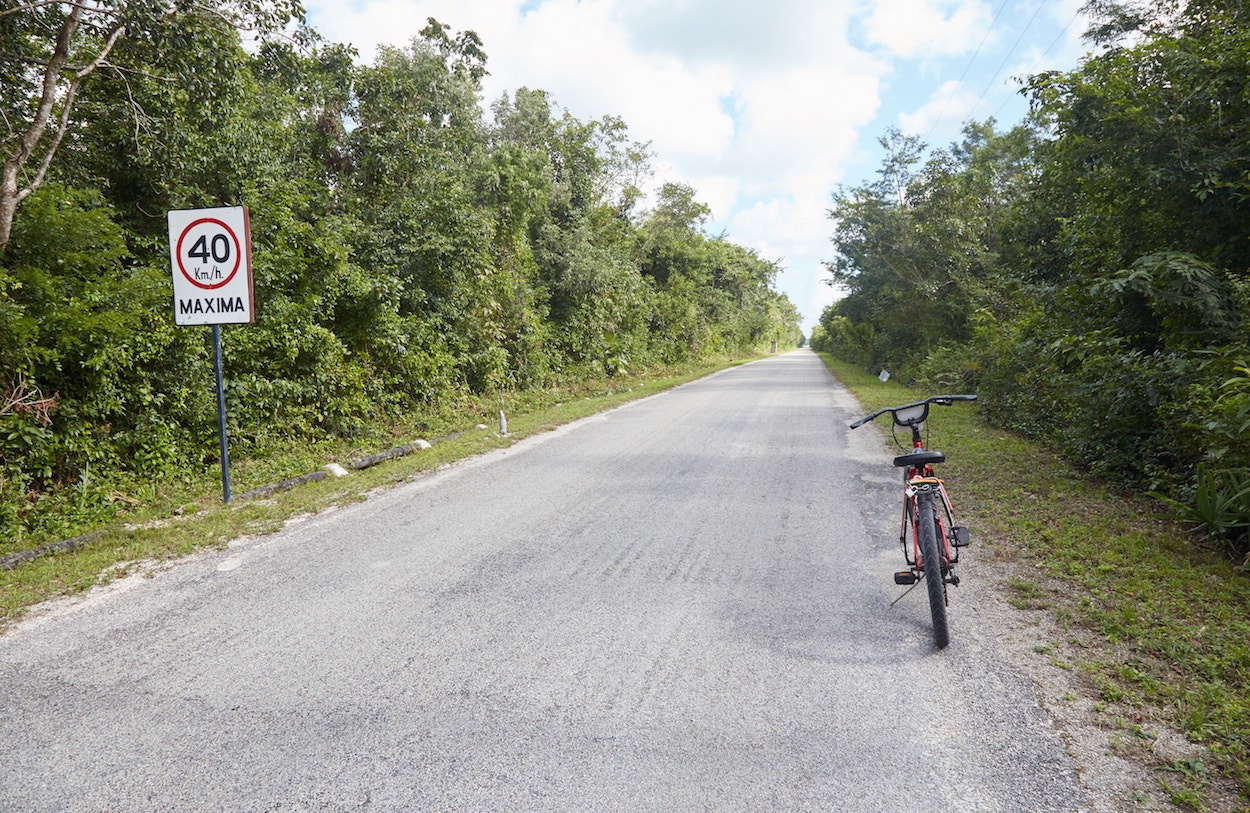
But given the island’s heat and humidity, it’s no easy journey, so come prepared with ample water. And some may argue that the San Gervasio ruins aren’t nearly impressive enough to warrant such effort.
But to me, the hot and sweaty bike ride over only added to the overall experience. Cost aside, I don’t think having simply taken a taxi would’ve made for nearly as memorable a day trip.
Whichever way you choose to visit, entry to the San Gervasio ruins costs around $190 MXN in total, paid at two separate booths: one for the local site and another for the Institute of History and Anthropology of Mexico, or INAH.

Exploring The San Gervasio Ruins
Known by the Mayans as Tantun Cuzamil, the San Gervasio ruins have a long and illustrious history, dating back to around the 4th century AD during the Early Classic period. It was far from being the only Mayan settlement on Cozumel, but it long served as the island’s administrative center.
In the Late Classic period, from around 1000-1200 AD, Cozumel was controlled by the Itza people, who ruled from the splendid capital of Chichén Itzá. They coveted Cozumel for its ideal position as a trading hub.


While the two sites couldn’t look more different today, San Gervasio’s urban design was actually modeled after Chichén Itzá’s, with its numerous plazas being connected by sacbes, or elevated stone roads.
Long an important commercial center, San Gervasio became well-known as a religious pilgrimage spot in the Post Classic period (c. 1200-1650). Even after the collapse of the great Mayan city-states, San Gervasio was still a thriving economic and religious center when the Spanish conquerors arrived.
Arriving at the ruins, one of the first landmarks you’ll encounter is a large stone tomb (which interestingly resembles an Egyptian mastaba). In addition to being a tomb, the flat structure was likely used for open-air ceremonies.
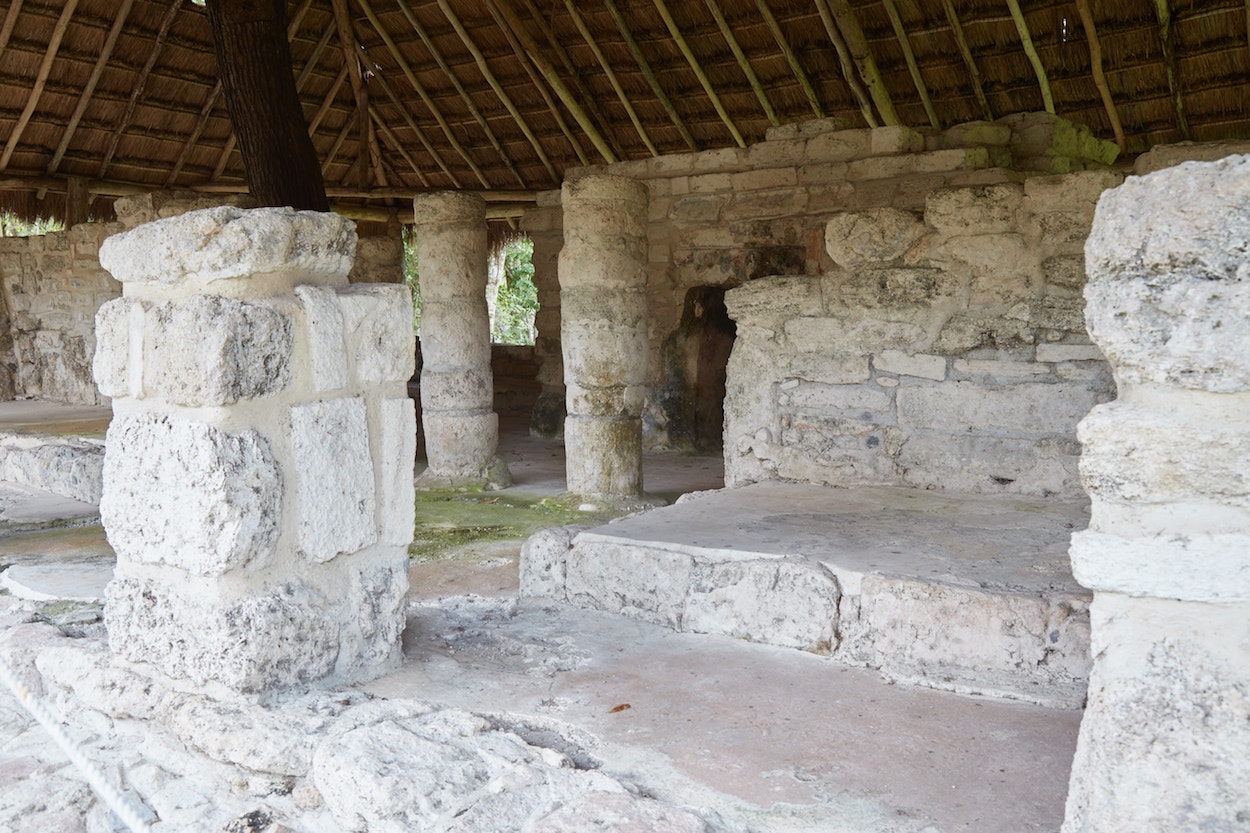
Just next to it is one of San Gervasio’s most significant landmarks known as the ‘Little Hands Structure,’ or Estructura Manitas.
It was named after the numerous red handprints that were found along the walls, some of which can still be seen behind the columns – if you can make them out in the dim lighting, that is.
Interestingly, the structure may have been both a residential space and a temple. Archaeologists even believe it may have housed the Itza overlord of Cozumel during the Late Classic Period.
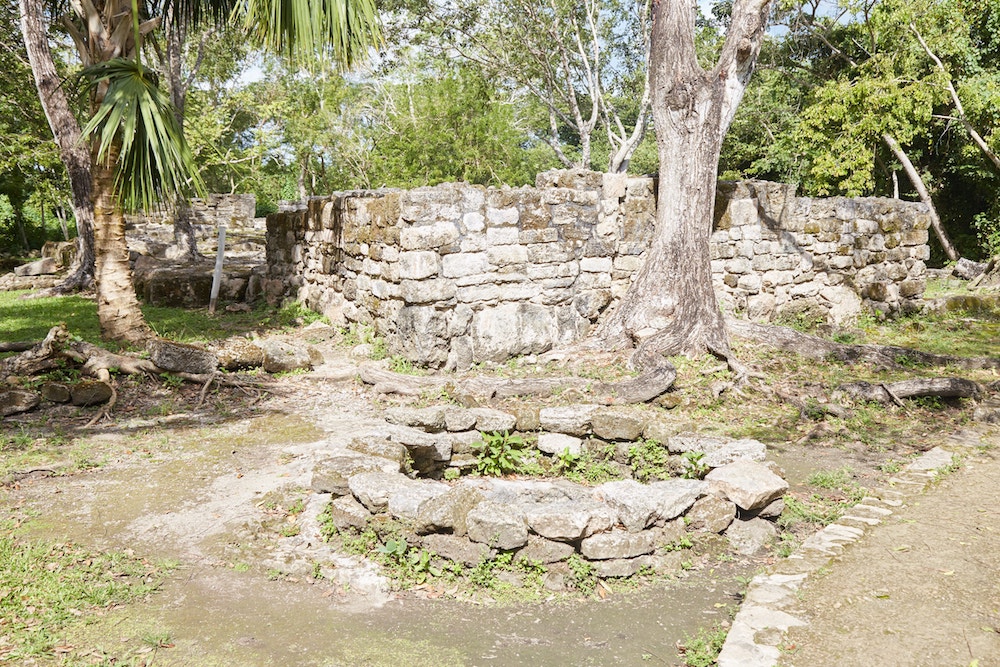
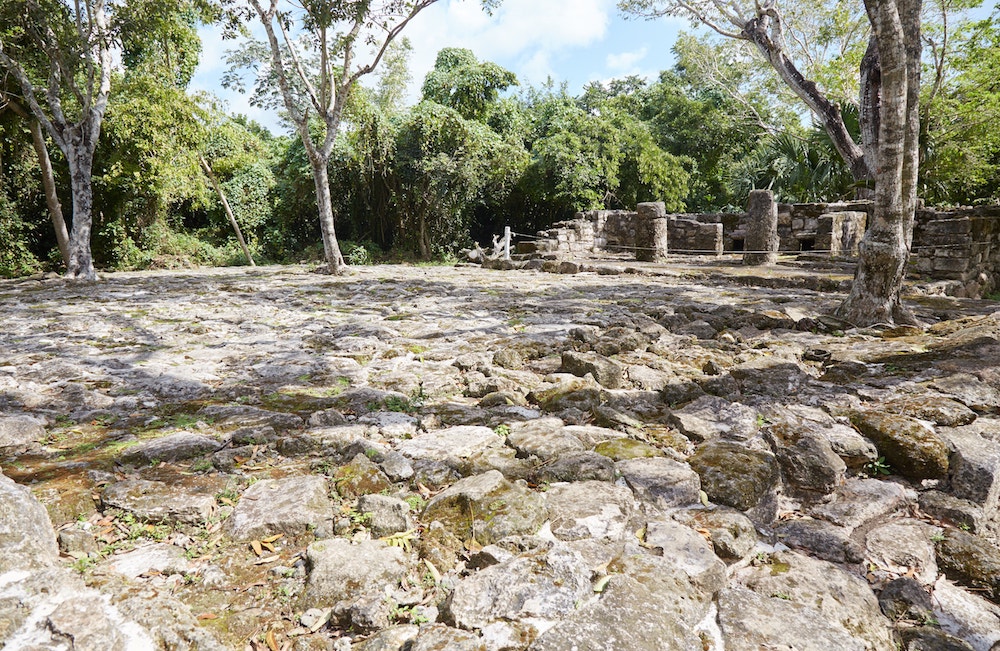
While San Gervasio may be somewhat obscure, due to the fact that at least eight cruise ships dock at Cozumel daily, tour groups are a constant presence at the site.
From the ‘Little Hands Structure,’ most tour groups will head northwest directly to the Central Plaza. But if you’re visiting independently, take the trail to the east instead.
Along the way, you’ll pass by a series of residential buildings which originally would’ve been covered by palm fonds. A building simply known as Structure 31 is situated near a small temple and may have been the house of a local chief.
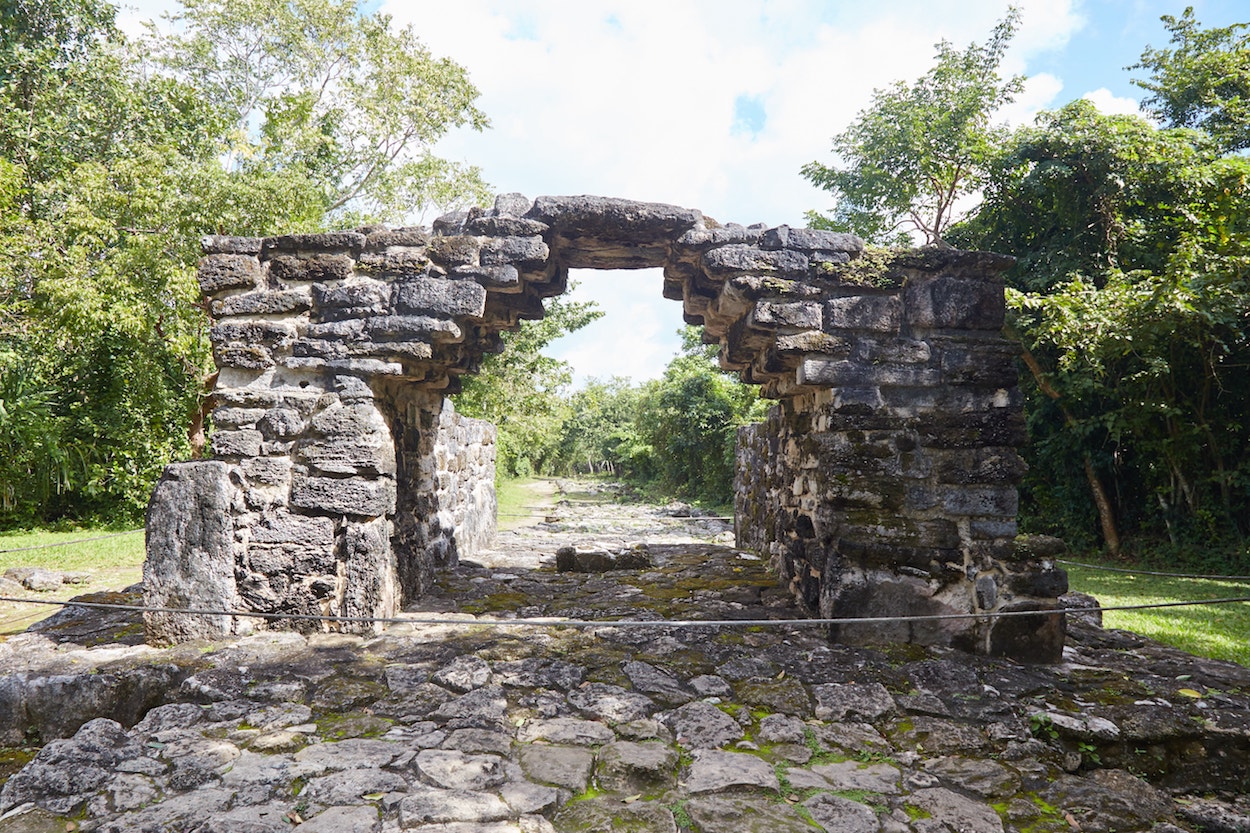
Moving on, you’ll reach an arch that once marked the entrance to the city center. From the arch, the Mayans would walk along a sacbe leading to the settlements along the coast. In ancient times, traders and pilgrims would stop at this point to leave offerings for the goddess Ixchel.
Next, walk through the arch down the ancient stone sacbe, surrounded by dense forest on either side. You’re likely to find yourself completely alone here.
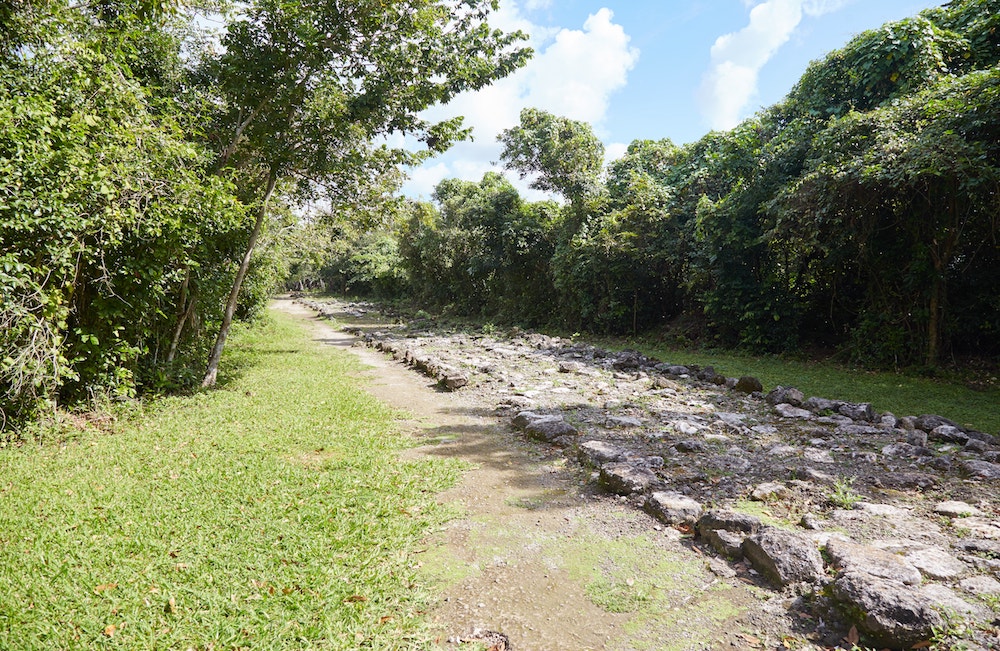
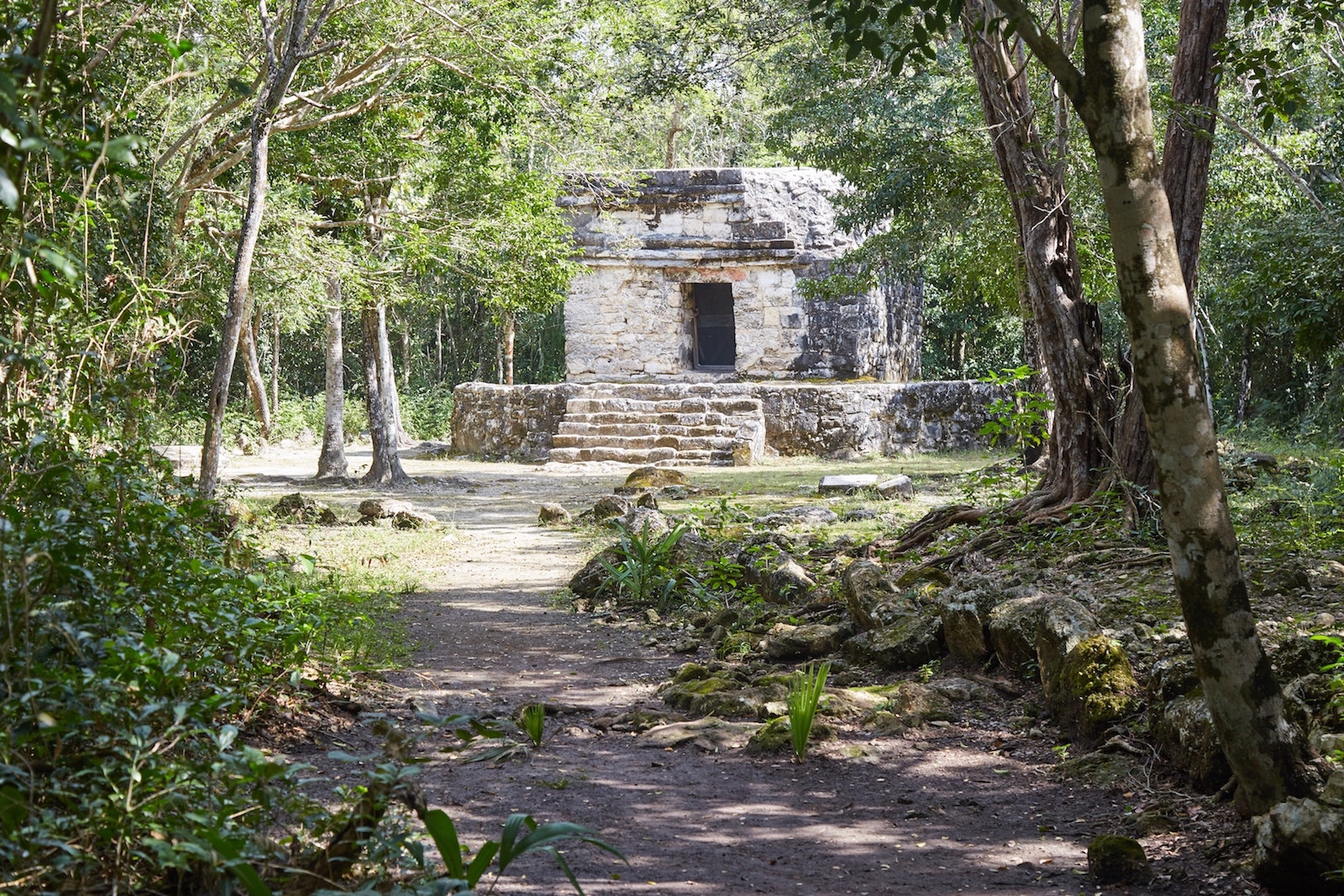
Eventually, you’ll reach the ‘Big House Structure,’ one of San Gervasio’s best-preserved landmarks. This was not a house, but a temple, and it featured a large altar for offerings in its center.
Back in its heyday, this would’ve been a colorful building, painted in bright red and blue. What stands today was built in the Post Classic period, completely covering an older, smaller structure.

Next, take a left, heading northwest down yet another forested path. You’ll eventually reach the ‘Murcielagos Building,’ the most important structure of the San Gervasio ruins in the Late Classic period.
Once serving as the residence of the local chief, this area originally functioned as the city center before that shifted to the Central Plaza (more below).
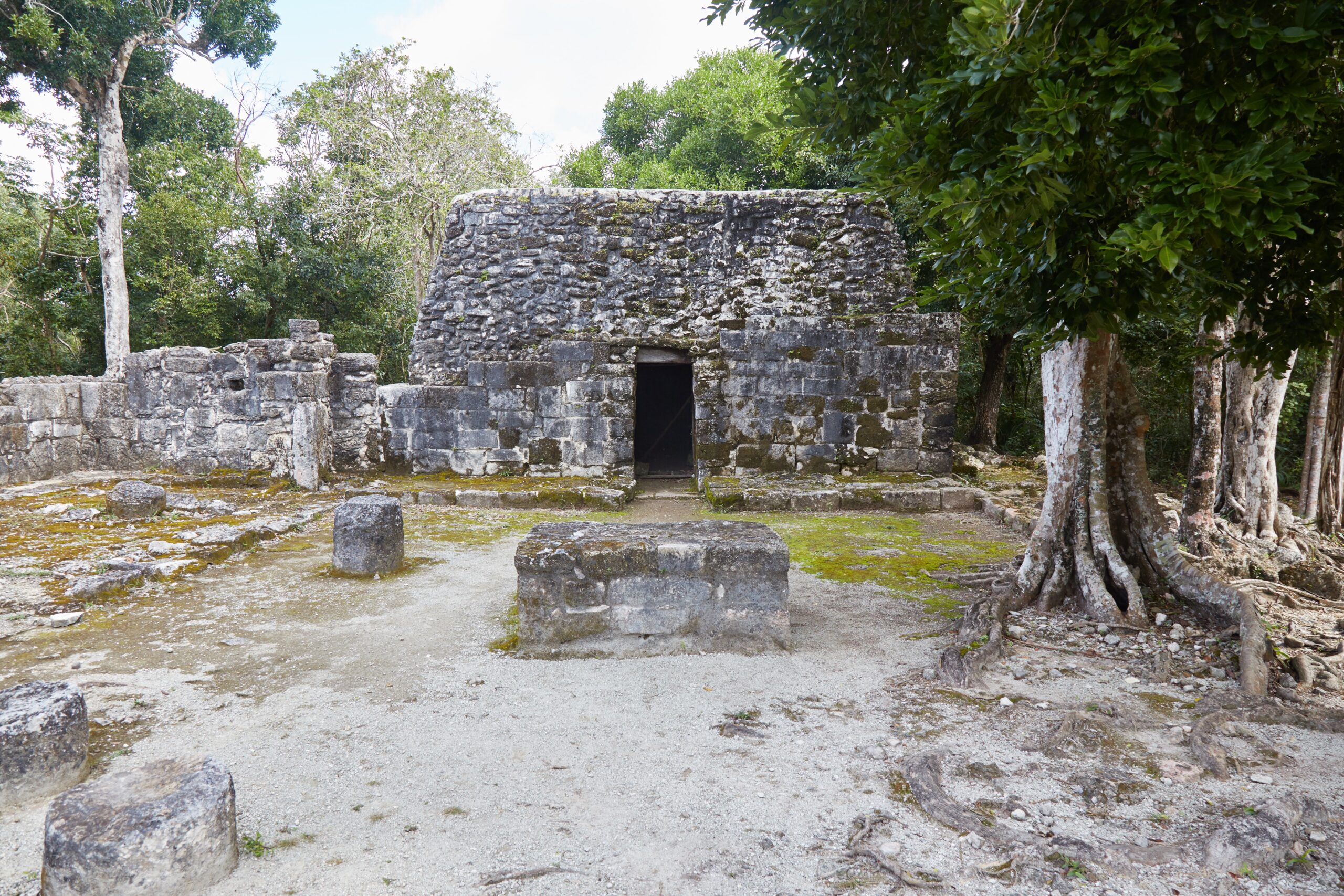
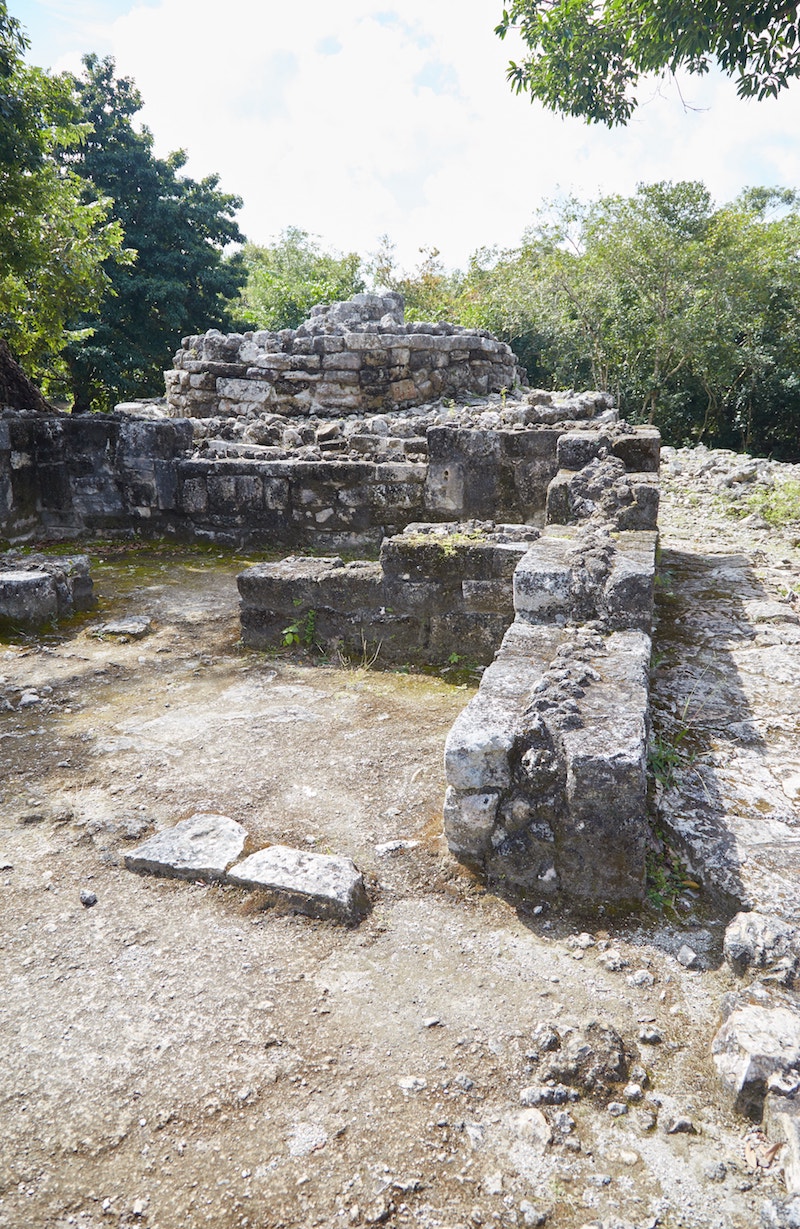
Nearby is an interesting structure consisting of two rounded platforms. Built during the Post Classic period, archaeologists don’t seem to know much about its original function, but it reminds one of the rounded observatories of Chichén Itzá or Mayapán.
When finished, you’ll want to take another forested path back to the center.
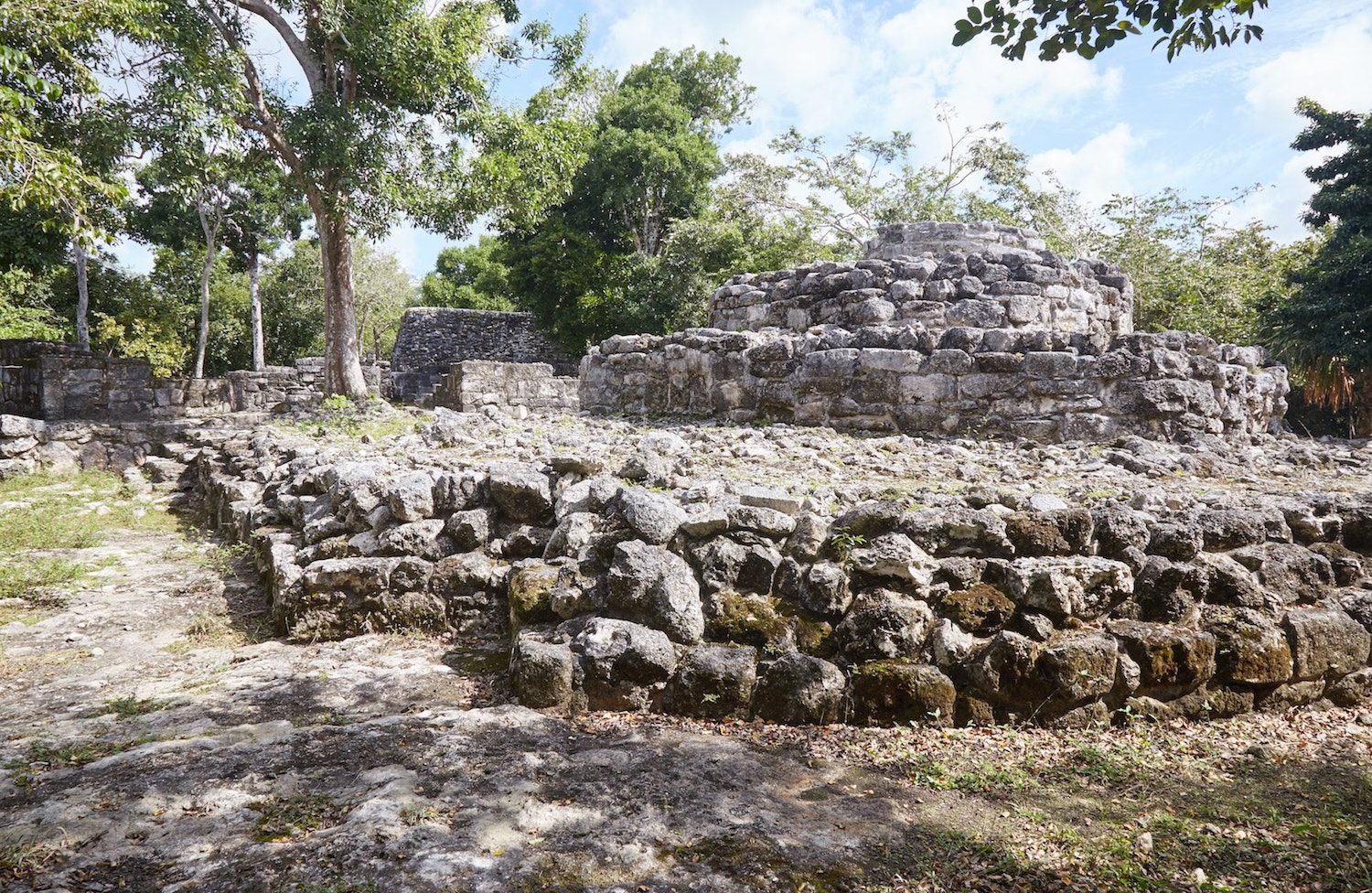
In the center of the Central Plaza stands a large ceremonial altar, which faces a building called ‘The Murals Structure.’ As one might guess, numerous fragments of colorful murals were found inside. It was once used for ceremonial purposes, and it featured several altars of its own.
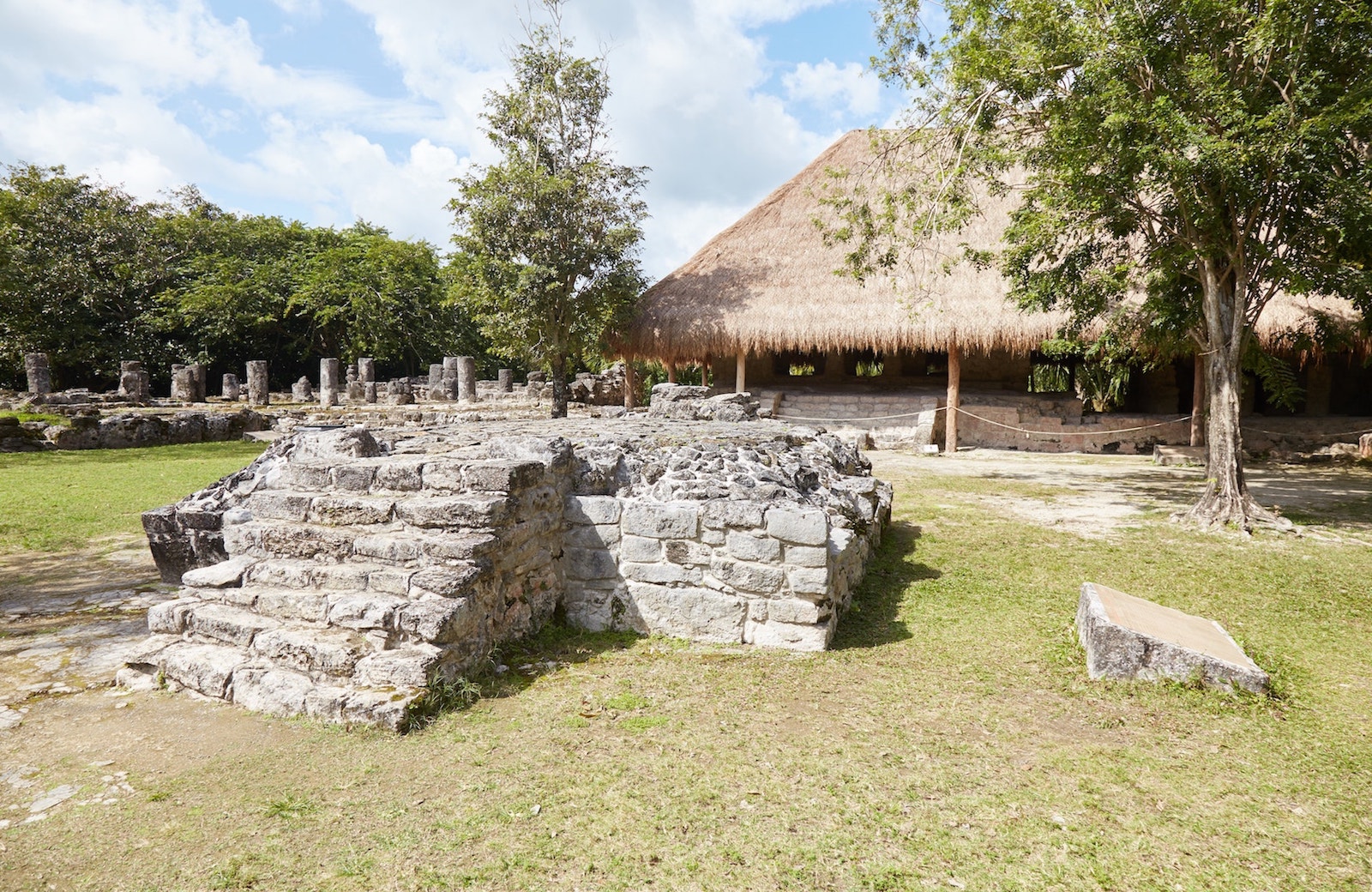
Surrounding the plaza, meanwhile, are numerous other interesting structures. One of them features several columns and underneath it, six burials were discovered together with small stelae.
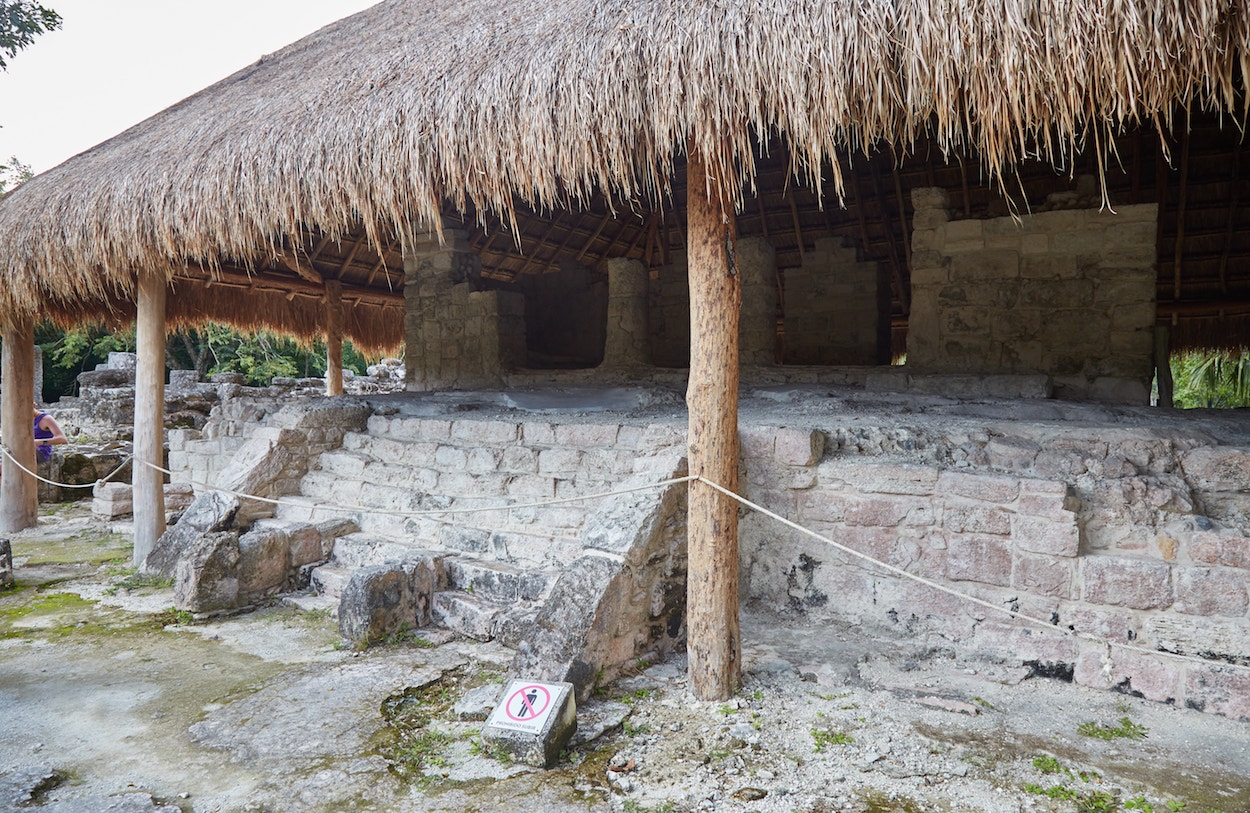
Just nearby is the ‘Niches Structure,’ named after the small shrines built on either side of its stairway. It stands next to a colonnaded hall. Nearby is the Ossuary, in which a large amounts of human remains were found.
Also in the plaza is a palace structure, featuring colonnaded halls typical of the ‘East Coast’ Mayan architectural style.
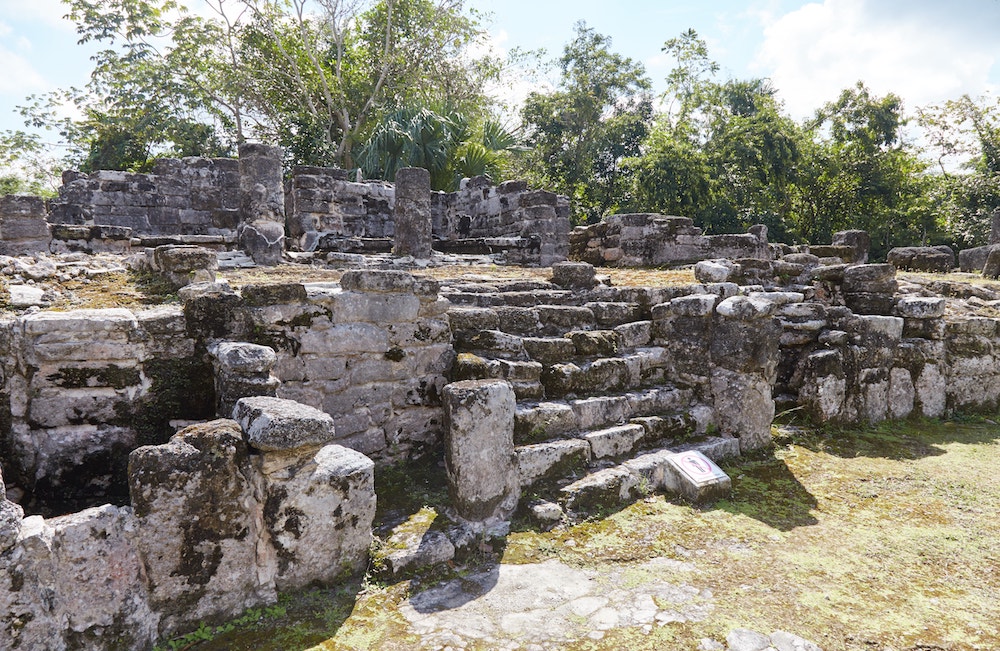
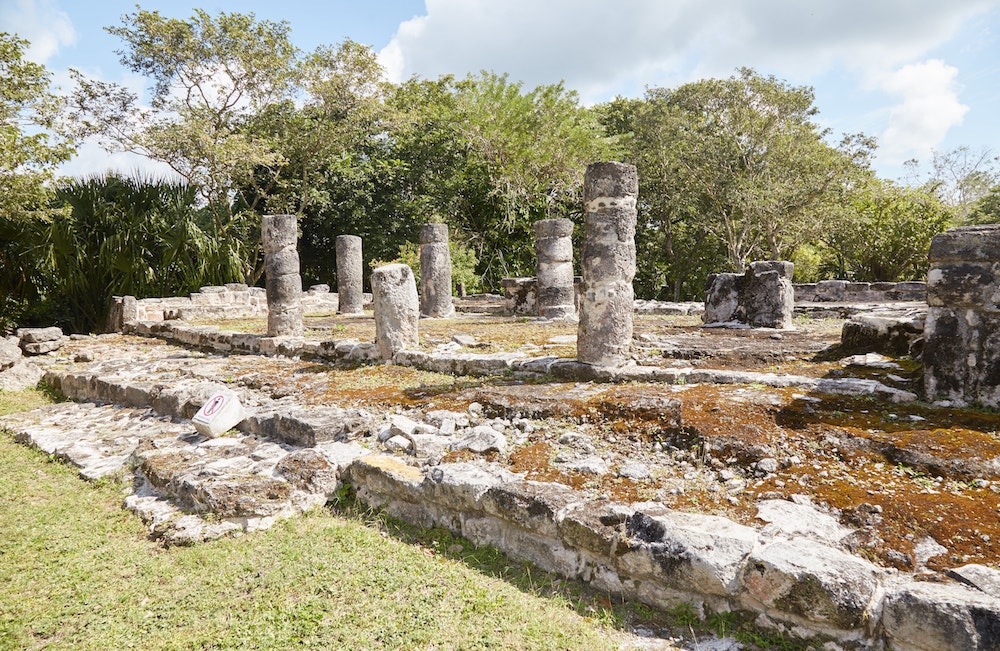
As the Central Plaza was among San Gervasio’s most important areas, this is where most of the tour groups dedicate a majority of their time. But by taking a path which leads to the west, you’ll soon leave the crowds behind on your way to the largest structure of the San Gervasio ruins.
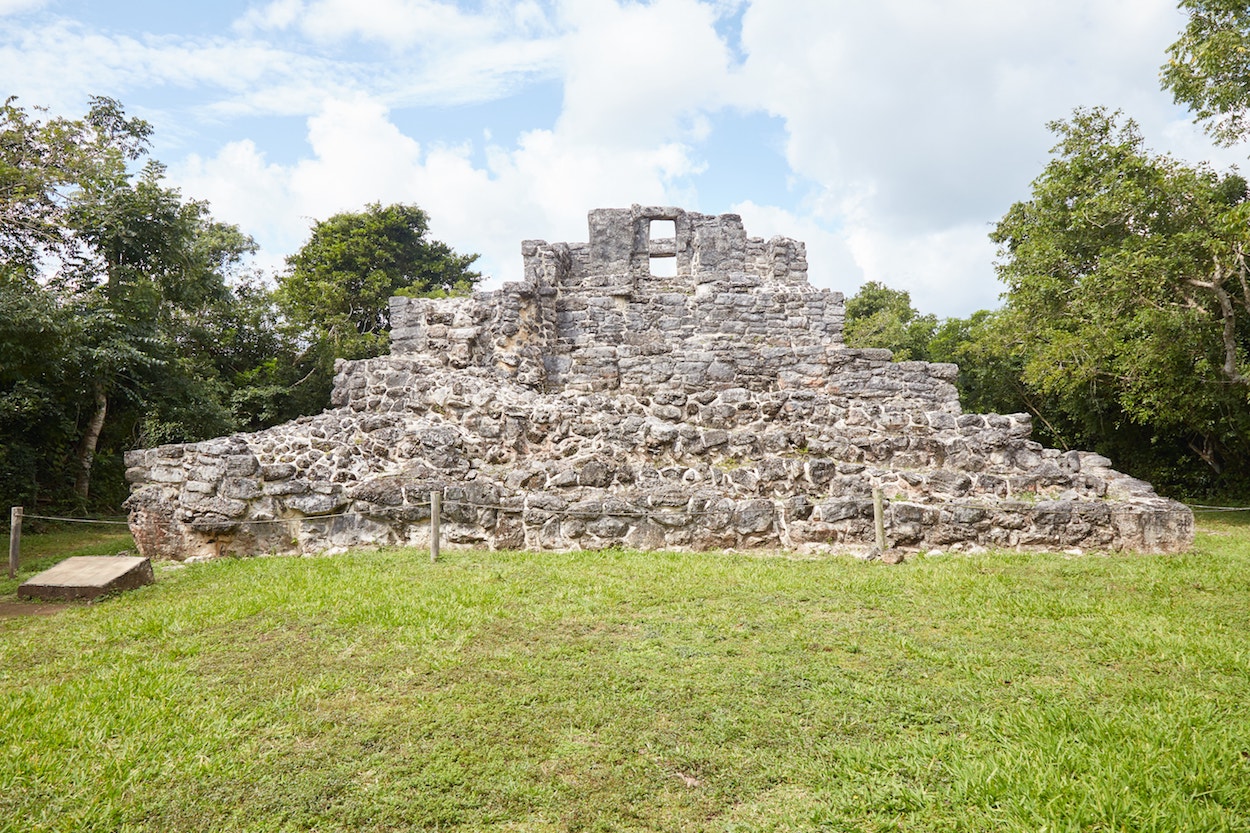
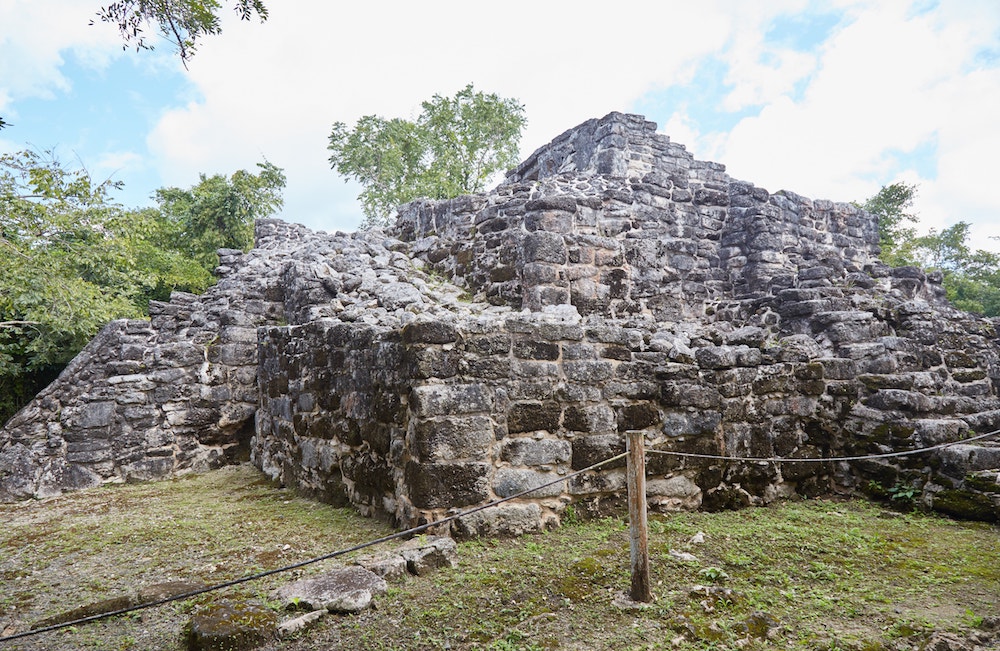
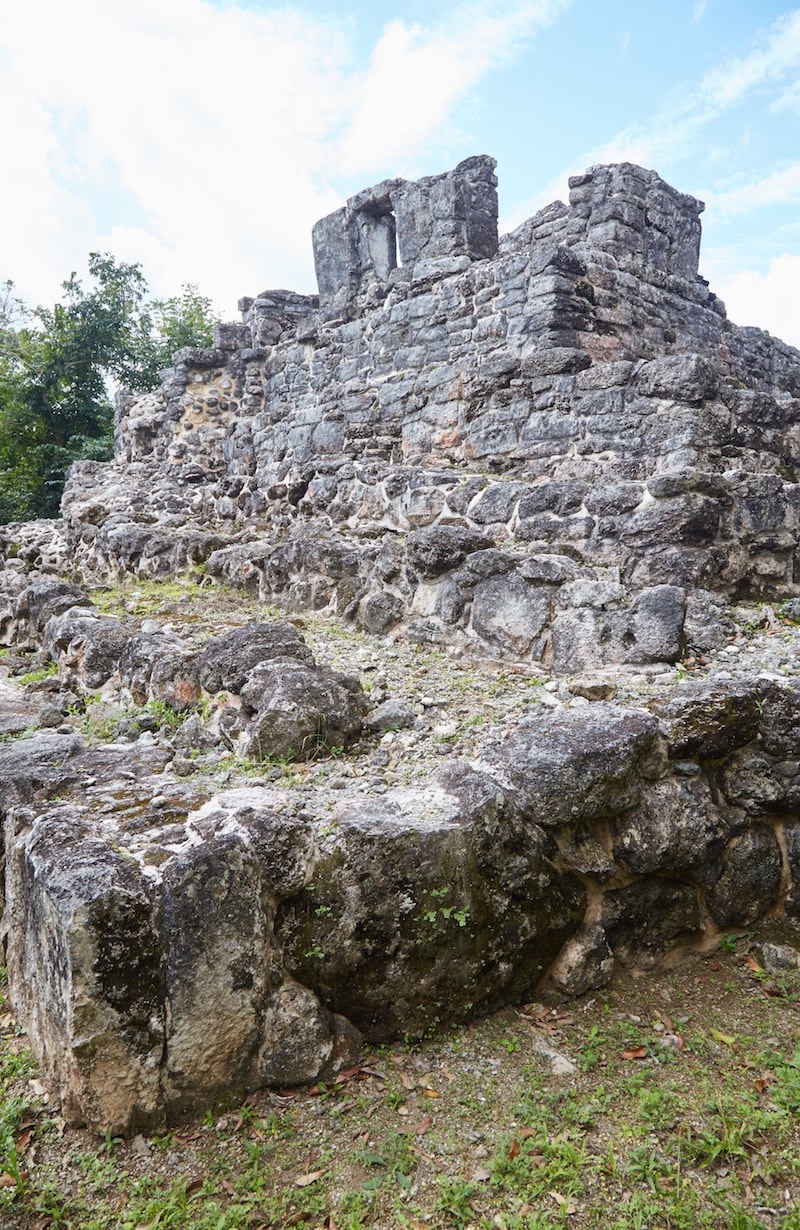
Officially known as Kana Nah, or the ‘Tall House Structure,’ the small pyramid was comprised of numerous altars. Originally covered in stucco and painted in blue, green, red and black, this was the central temple of Ixchel, the Mayan goddess of fertility, among other things.
Cozumel was long believed to be Ixchel’s abode, and religious pilgrims were still visiting the island at the time of the arrival of the Spanish.
In fact, a life-sized statue once stood at the top of this pyramid, which was believed to be an oracle.
Who was Ixchel?
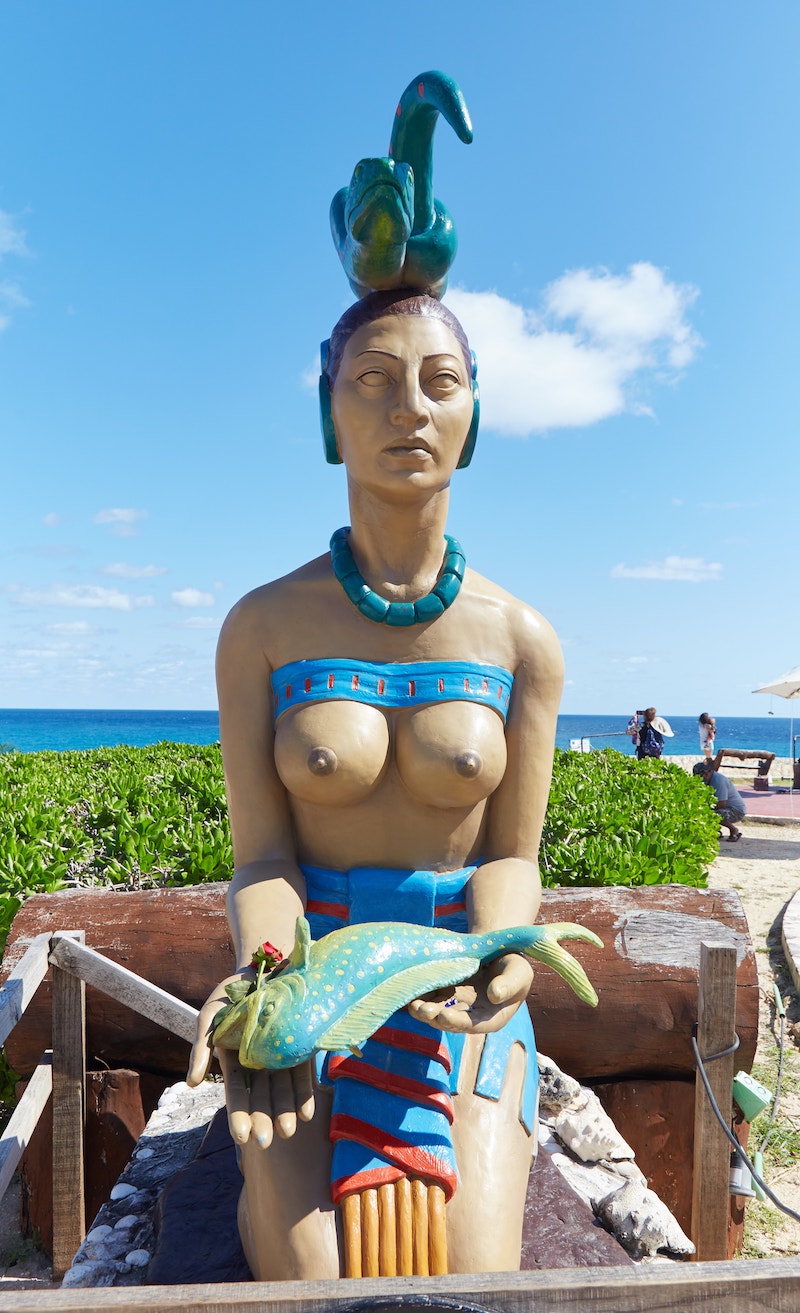
Ixchel was the Mayans’ primary female deity. She represented things like fertility, midwifery, water, the moon, love and medicine.
She was the wife of the sun god Ak Kin and her name in the Mayan language translates to ‘rainbow woman.’ In other Mayan myths, she was the wife of the creator god Itzamná, with whom she bore 13 children.
In Mayan art, she was depicted as a young woman to represent the waxing moon and as an old woman during the waning moon. Accordingly, Ixchel was associated with natural cycles. (It’s possible, however, that archaeologists have mistakenly labeled two distinct goddesses from the Mayan codices as one single divinity.)
She also commonly wore a snake in her hair and was often depicted with a rabbit, a symbol of fertility.
Another symbol of Ixchel was a skull and crossbones, and she was sometimes regarded as a war goddess. Like many other prominent goddesses throughout the world, such as Sekhmet and Kali, Ixchel had both a soft and a fierce side.
Cozumel was long considered her primary abode, and Mayan pilgrims would begin their pilgrimage from Xcaret (just south of Playa Del Carmen) by canoe.
Many women would visit San Gervasio to pray for a healthy pregnancy. And according to some sources, all Mayan women were obligated to undertake this journey at least once in their lives.
Ixchel was also worshipped at the nearby island of Isla Mujeres, named after the small figurines of women that pilgrims brought as offerings.
More Cozumel Ruins
While I initially visited the San Gervasio Ruins as a day trip from Playa del Carmen, I returned to the region several months later, staying on Cozumel for some rest and relaxation. On one day, I decided to rent a bicycle to see what other Mayan ruins I could find.


Not far from the beautiful public beach of Playa Palancar, you can find the village of El Cedral. While it costs 50 pesos to enter, the peaceful village is home to a tiny yet well-preserved Mayan temple, which stands right next to the town church.


Not far from the main town is the Mayan Plaza, which is actually a shopping center that’s home to a Mayan Pyramid. While not much information on it exists, it appears to be a full replica.
At the southern tip of the island, meanwhile, is the El Caracol Archaeological Zone. While I was hoping to visit, I decided against it after learning that you can only see it by paying for a ticket for the Punta Sur Eco Beach Park that costs over 300 pesos.
Additional Info
As mentioned above, I rented a bicycle for the day for $250 MXN, or about $12 USD. It’s also possible to rent a motorbike, though I’m not sure how much that would cost.
As ridesharing apps do not work on the island, your only other option would be a tour like this one or a taxi. From what I read online, taxis would cost at least as much as $50 USD roundtrip, but likely significantly higher!
While I enjoyed my trip to the ruins, they aren’t nearly spectacular enough to warrant such a price, unless you can split the cost with a group, or if your driver can take you to additional locations. If you will only be basing yourself along the Riveria Maya, it’s best to spend that money on a trip out to Chichén Itzá or Ek Balam instead.
Regular ferries between PDC and Cozumel are run by two separate companies: Ultramar and Winjet. There’s a ferry leaving every hour, with each company’s ferries alternating by the hour.
As the ticket booths are right by one another, you don’t have to plan too much. Simply show up to the pier area and buy your ticket from whichever company happens to be leaving next.
At the time of writing, a one-way journey costs $250 MXN. I made the mistake of buying a roundtrip ticket assuming I’d be saving some money without really checking.
It turns out that that’s not the case, so buying a one-way ticket is a better idea. On the way back, I had to wait an extra hour because I was stuck with a return ticket from the other company.
Also beware of people around Playa del Carmen trying to ‘help’ you buy tickets. I don’t know what they’re really up to, but there’s no need for any assistance when you can simply go up to the ticket booths and handle everything yourself.
Playa del Carmen can easily be reached via ADO bus from either Cancún or Tulum. You can also find colectivos (shared minivans) for a cheaper price, though these aren’t always the best option for people with lots of luggage.
If you need a taxi upon arrival, don’t ask the drivers waiting by the station. Curious about what they would say, they quoted me $250 MXN for a ride that should only be $50 MXN. It’s best to flag a taxi down from the road instead.
Unfortunately, no ridesharing apps work in PDC. While the Cabify app is supposed to work, it was never able to connect me with a driver.
As mentioned above, Cozumel and the San Gervasio ruins are an easy day trip from the popular tourist town of Playa del Carmen. Located along the Riviera Maya in between Cancún and Tulum, Playa del Carmen is now one of Mexico’s most popular spots for tourists and expats alike. But why?
I decided to spend a couple of days there to see for myself. Having done it, I’d have to say that PDC is perhaps the most overhyped place in all of Mexico.
Aside from the obvious advantage of being situated along a beautiful white sand beach, the town itself has no atmosphere or charm, while you have to deal with people constantly trying to rip you off.
To make matters worse, PDC also has major issues with crime. A bar manager was shot and killed at his establishment on one of the nights I was in town, while numerous reports online complain of apartment and hotel break-ins.
Luckily, I didn’t have any problems there, nor did I feel unsafe. But I have no idea why so many expats would choose to make this town home. If you love PDC and feel like I’m missing something, feel free to leave a comment.
If you still insist on visiting Playa del Carmen, where should you stay? For the sake of convenience, the closer you are to the bus station and ferry port in the south part of town, the better.
If you’re hoping to stay right near the beach, one of the highest-rated options is Porto Playa Condo Hotel. Those on a tighter budget, meanwhile, should look into 5th Avenue Beach Balance.
As a budget traveler visiting during peak season, I had a hard time finding something at a reasonable price in the center, and ended up in an Airbnb in the north part of the city, near Calle 68.
From there I had really easy access to a much less crowded part of the beach, which was quite nice. But otherwise, it was a pain to get around.
As mentioned above, I initially visited Cozumel as a day trip from Playa del Carmen. But later on, having a couple of weeks to kill before a flight out of Cancun, I decided to relax on the island, which happens to be among the most affordable Riviera Maya destinations.
Considering the amount of cruise ships that stop there each week, Cozumel is indeed very touristy. But compared with the other ultra-touristy destinations of Mexico (Cancun, PDC, Tulum, Puerto Vallarta, Sayulita, etc.) I found Cozumel to be among the most livable.
In the main town of San Miguel de Cozumel, you just have to head a few blocks inland before you feel like you’re in an ordinary Mexico town. And despite all the resorts being built throughout the island, a majority of Cozumel remains untouched jungle which adds to its mystique.
The most convenient place to stay in Cozumel would be the main town, with popular choices being Casa Mexicana Cozumel or OYO Hotel.
The main downside of the town is that there aren’t really any beaches nearby, though you can find some rocky areas not far from town where it’s possible to swim.
If you’re looking for somewhere right along the beach, consider highly-rated hotels like Suites Turquesa or ‘Your Home in Cozumel.’
For those staying a few weeks or more, you’re likely to find the best deals on Airbnb.
